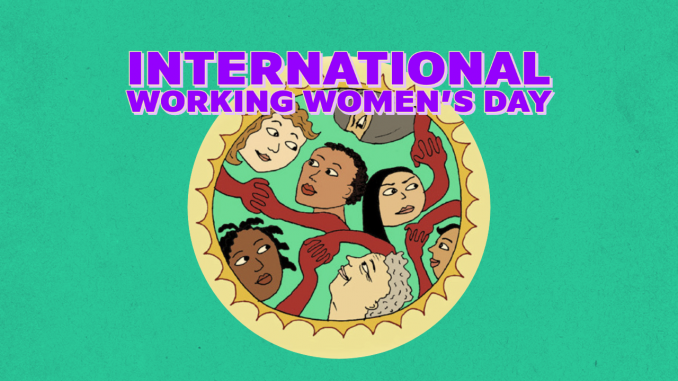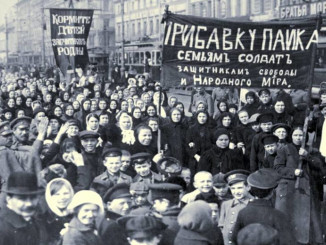
It’s been over 100 years since the celebration of the first International Women’s Day, now observed on March 8. From its origins, it has been a day to celebrate the struggles of working women and fight for their rights. Forged out of demonstrations against women’s exploitation and oppression, it was declared a holiday at the International Socialist Women’s Conference in 1910. Just a year later on this day, over a million people marched in demonstrations across the globe to press for women’s demands.
1912 saw textile workers in Lawrence, Massachusetts in the first major strike led by women, against poor working conditions, sexual harassment, and wage cuts. The slogan that came out of the strike — “Give Us Bread and Roses, too” — would be associated with International Women’s Day. Women were fighting not only for their basic needs — “Bread” — but for the ability to enjoy their lives — “Roses.” Later, in commemoration of International Women’s Day in 1917, Russian women left their factories and marched in the streets for “Bread and Peace,” helping spark a revolution that would overthrow the oppressive dictatorial regime.
In many of their fights, women saw their role in society not just as wage workers, but as caregivers and child bearers. After they toiled at paid jobs, most would also be expected to go home for a “second shift,” taking care of children and household chores. This unpaid labor helps keep the capitalist system running — people have to eat to survive, and children grow up to be workers. It is women who have been mainly tasked with these unpaid responsibilities.
Today, women globally have only about 75% of the legal rights given to men. In over 80 countries, being a woman restricts you from certain jobs. 95 countries do not guarantee equal pay for equal work, and even in the countries where equal pay laws exist, wage gaps remain. In the U.S., women are paid 82 cents for every dollar paid to men — and the disparity is even wider for queer women and women of color. And women experience more workplace harassment than men.
There are 24 countries where abortion is illegal under any and all circumstances. In the U.S., nearly one in five women have been raped in their lifetime. According to the World Health Organization, an estimated one in three women in the world are raped.
Today women are continuing the fight for their liberation from the oppressive nature of these gender roles. In Iran last year, women rose up against a ferocious and sexist dictatorship under the slogan “Women, Life, Freedom.” The movement began in response to the brutal beating and murder of Mahsa Amini, a young woman, by the police, who claimed she was wearing her veil “incorrectly.” The response grew, as women poured into the streets, refusing to allow the government to dictate how they should dress, and what they should do with their lives. As the demonstrations intensified, hundreds of thousands took part and the movement spread, with men joining, supporting the demands for women’s rights and opposing the oppressive regime.
In the U.S., women and their supporters demonstrated after the Supreme Court decision to overturn Roe v. Wade. Ten thousand protested at the U.S. Capitol alone, condemning this decision to take away the right to an abortion. Many more stood up against this attack and the attempt to impose control over their bodies.
Over the last few years, movements have also grown in a number of Latin American countries, where hundreds of thousands of people have taken to the streets demanding and winning the right to abortion. This mass movement, “the Green Wave,” won protections for the right to an abortion and greater reproductive freedom for women. We have something to learn from our southern neighbors!
The struggles of women have been central to the fight against oppression throughout history. Women’s traditional roles are central to the functioning of society — bearing and raising of children, as caregivers and doing other essential work. The demand for “Bread” has not just been the cry of their own hunger, but to feed their families. The demand for “Roses” reflects our desires for art and beauty in our lives.
The poem, “Bread and Roses” was embraced by the striking women of Lawrence Massachusetts, and was put to song. It includes the important line “The rising of the women means the rising of the (human) race.” The struggles of women today and throughout history, are linked to the struggles of the working class and of oppressed people all over the world — a collective struggle to win the life that we all need and deserve.


